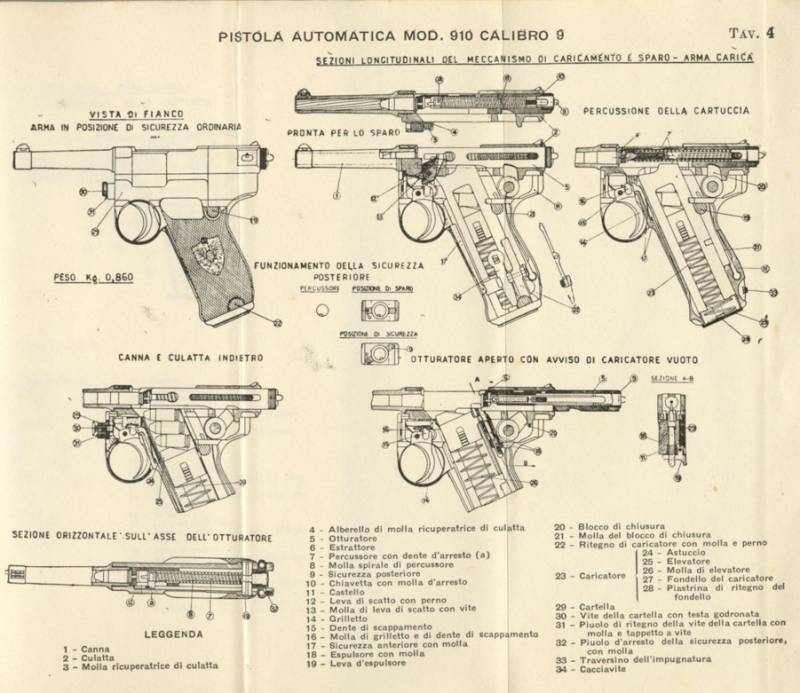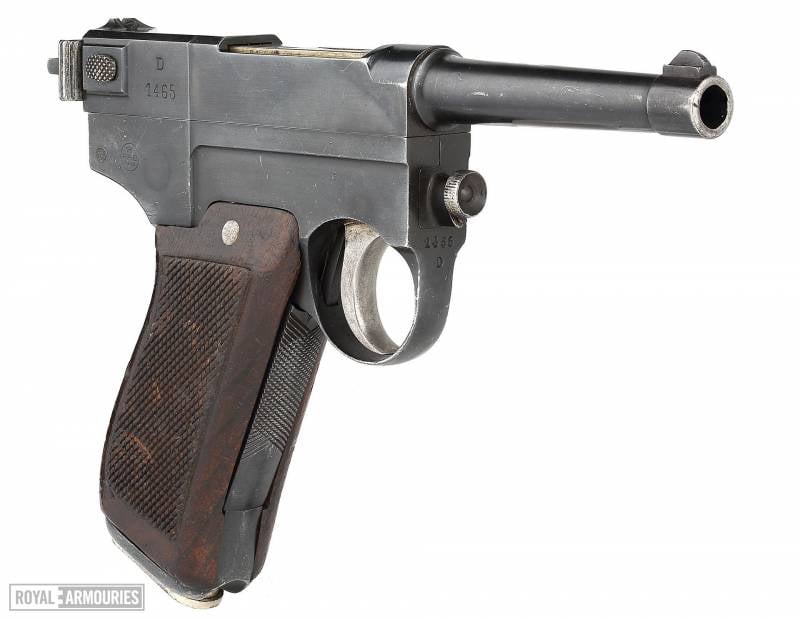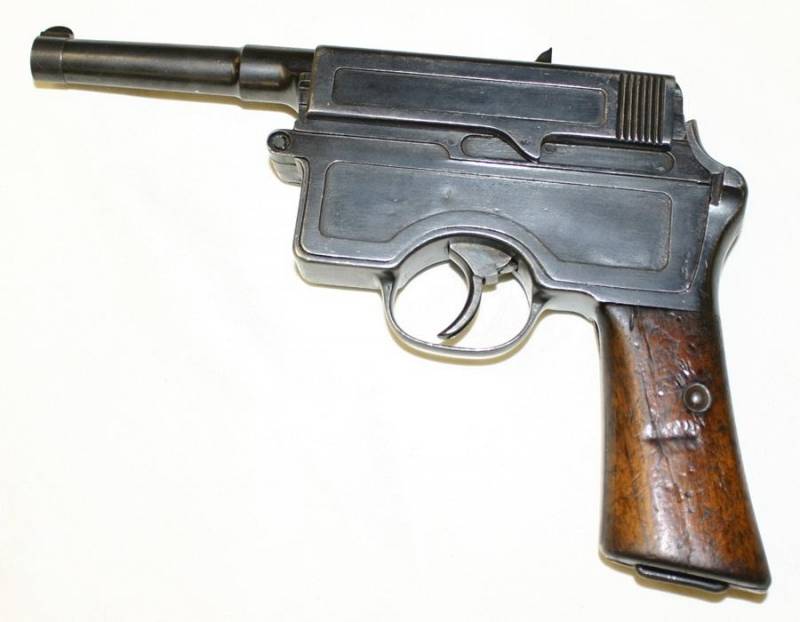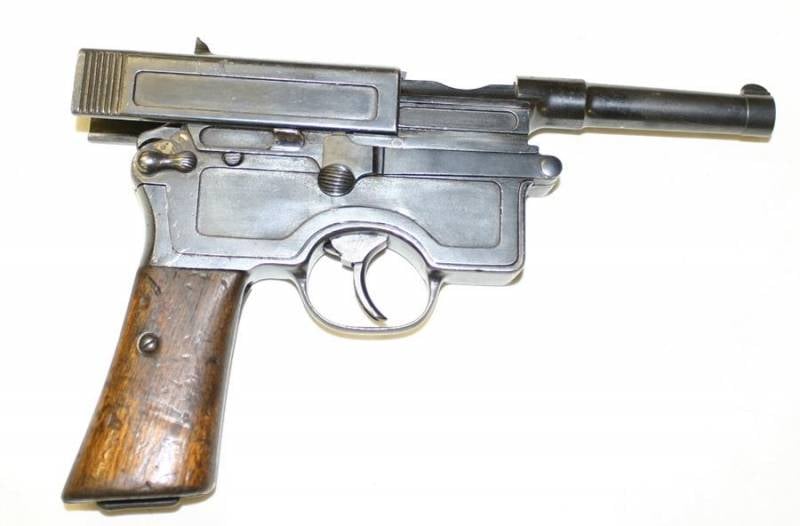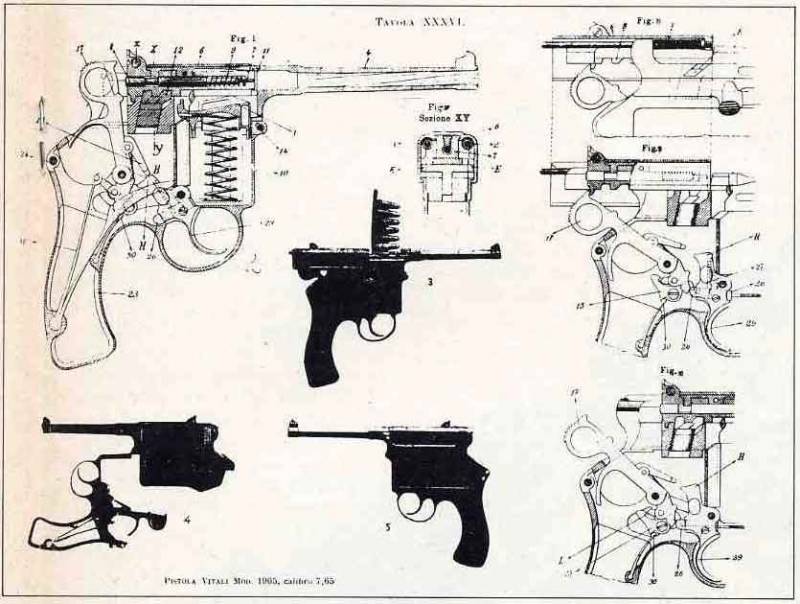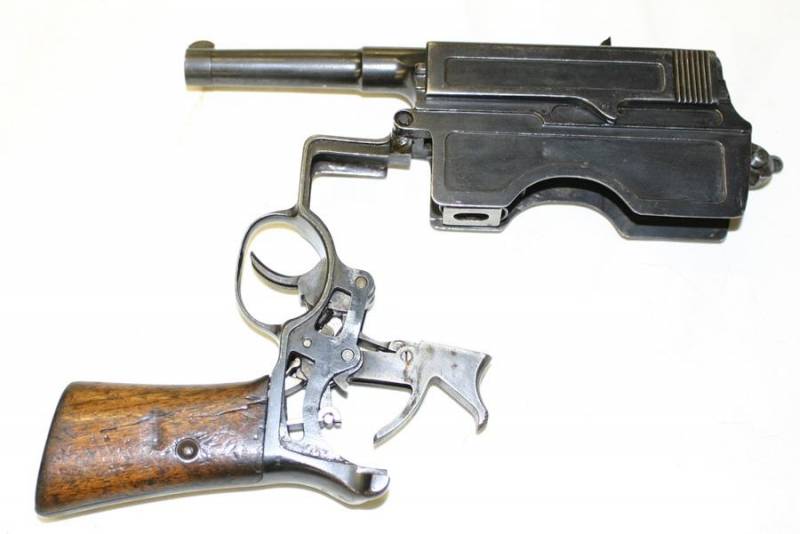
Nicolas Cage fires a Glisenty pistol. A still from the 1989 Italian drama film A Time to Kill, directed by Giuliano Montaldo. The film is set in 1936 during the Italian invasion of Ethiopia. Filmed in Zimbabwe. Based on the novel of the same name by Ennio Flaiano
– I can not…
“12 chairs” I. Ilf and E. Petrov
stories about weapons. In all countries, sooner or later, the same thing happened: a person appeared (and sometimes more than one) who came up with the idea to make his own successful model of small arms and thereby gain fame, respect and money. At the same time, the desire to do very often turned their heads so much that the samples they received were not only no better, but much worse than the original models, which they were guided by as objects to follow! Moreover, it also happened that even the military turned a blind eye to their shortcomings, just to get their own, “national” weapon, for which, however, they later had to pay. In Italy, for example, in 1910, two such pistols appeared at once. And that’s what we’re going to tell you about today.
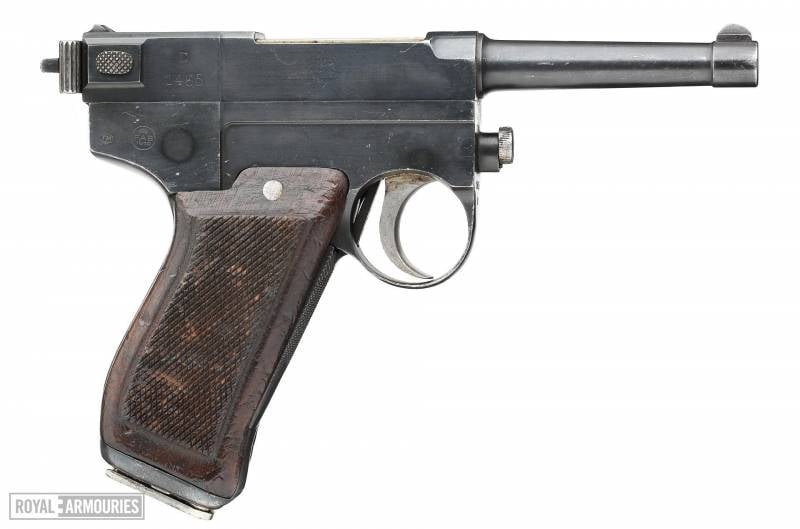
Pistol “Glisenti” M1910. Right view. Overall length: 206 mm. Barrel length: 95 mm. Weight: 800 g. Magazine: 7 rounds. Caliber: 9 mm. Muzzle velocity: 270–305 m/s. Externally, the gun does not look at all as elegant as the same Parabellum. The handle looks too wide, the bolt box is also clearly oversized. But the trigger guard is too small and could well be larger and … more convenient. Royal arsenal. Leeds
The first of them is the Glisenti, officially known as the Glisenti self-loading pistol mod. 1910, which was produced by Sochieta Siderurgica Glisenti. It was developed by Abiel Betel Revelli, an officer in the Italian army in 190-1903, and already in 1906 the company purchased the necessary machinery and equipment in the UK to start its production, but for a number of reasons was forced to sell all rights to the production of the Metallurgical Company in Brescia.” But the name behind it remained the same. Initially, it was designed to use a 7,65 × 22 mm cartridge with a bottle-shaped sleeve. And such a model appeared already in 1908 under the unofficial name Glisenti Modello 1906. But the military did not like it. They demanded to increase the caliber to 9 mm. But the design of the pistol was not designed for the powerful German cartridge 9 × 19 mm Para, and therefore it was decided to use its own cartridge of exactly the same size and caliber, but with a charge of gunpowder reduced by 25 percent. This is where it all started…
Soon the pistol was adopted as the main pistol of the Italian army, but for many years the old 10,35 mm Bodeo revolver mod. 1889, which was produced until the 1930s.
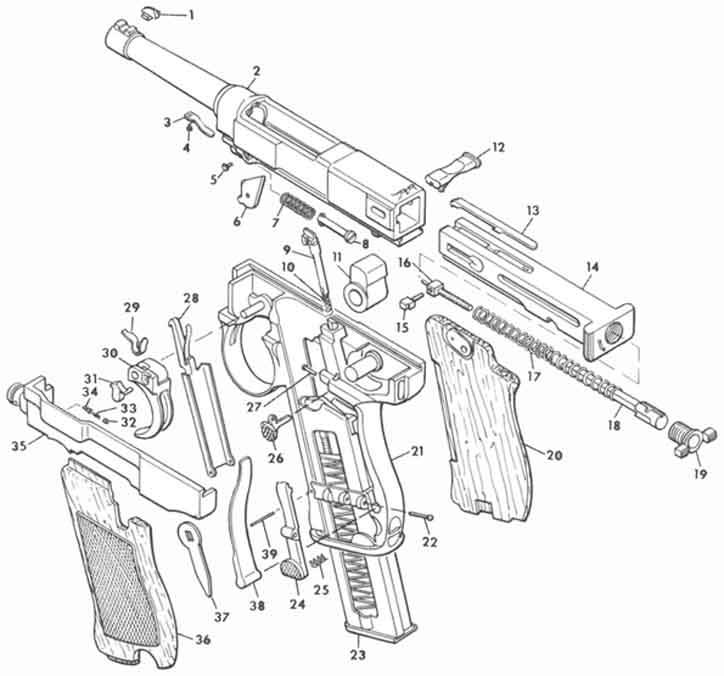
Detailed diagram of the Glisenti pistol
The new pistol had several rather strange and incomprehensible features at once. A mechanism of this type was rarely found in other models: it used a semi-free shutter, in which the barrel and receiver moved back when fired. Moreover, the shutter began to move until the barrel stopped, having passed about 7 mm. In this case, the barrel was held in place by a rising wedge-shaped lock, which fell as soon as the bolt began to return forward to send a new cartridge into the chamber.

Pistol “Glisenti” M1910. View from above. The upper surface of the shutter with the extractor spring is clearly visible. Royal arsenal. Leeds
It is difficult to call such a design successful. Firstly, the bolt was designed in such a way that, when moving back, it almost completely opened the pistol mechanism, which, of course, increased the likelihood of sand and dust contamination (especially in places such as the deserts of North Africa). Secondly, the trigger mechanism on it was self-cocking, so in order to fire from the Glisenti, it was necessary to press hard on the trigger, which first cocked the drummer, compresses the mainspring and only then released it. Because of this, the trigger had too long a stroke, and the production of a shot required considerable effort, which made it difficult to aim properly.
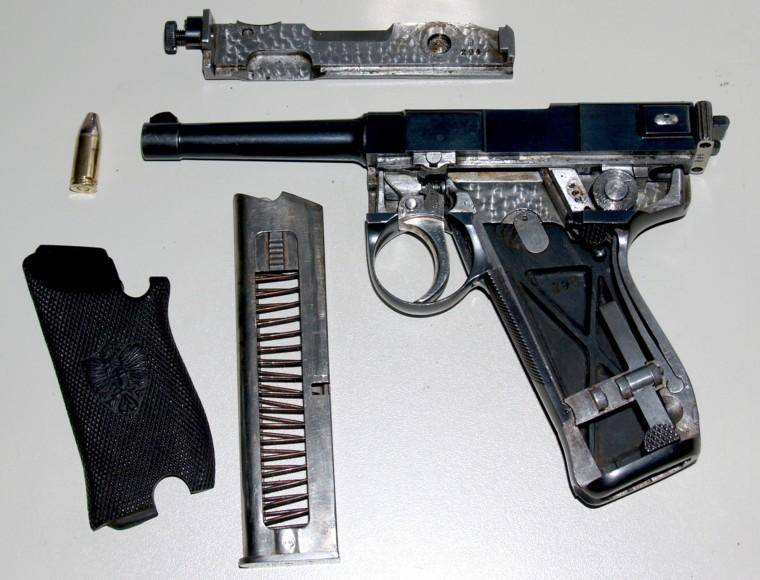
The pistol with the side plate of the frame removed is in the photo above and, in addition, turned upside down. It clearly shows the milled groove for the shutter in its rear part. It is clearly seen that it is attached to the frame at only two points, and only in one of them, namely the front, the mount is fixed! The bakelite cheeks of the handle were so fragile that, as soon as they broke, they were immediately replaced with wooden ones. Photo http://littlegun.be
But the strangest detail in this pistol (and you can’t say it any other way!) Was its frame. Usually, paired grooves or protrusions are milled in it for the movement of the shutter. The Glisenti had only one groove on the frame, on the right. But there was a groove on the left … too, otherwise the gun would not have worked, but for some reason it was on a removable plate, which was screwed to the frame with just one screw! This was supposedly invented so that the shooter had free access to the pistol mechanism and could easily disassemble it. And he really easily understood, it was only necessary to remove this plate by unscrewing the fixing screw in front. It is only known that any screw connection weakens over time, because the thread wears out.
With prolonged shooting, such a mount often weakened, and the plate could move aside at the most inopportune moment. That is, if you do not follow the screw and do not periodically tighten it, the gun could “self-sort” when fired with all the ensuing consequences. But be that as it may, the Glisenti pistol remained in production until the very end of the 1920s, and the Italian army used it until 1945.
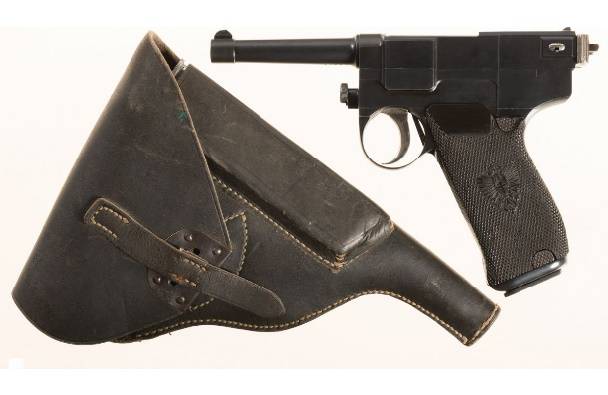
Pistol “Glisenti” and a holster to it. Photo https://www.rockislandauction.com
By the way, if you accidentally load it with an ordinary 9-mm cartridge, when fired, it could well collapse with the most unfortunate consequences for the shooter. And confusing these cartridges, by the way, was quite easy.
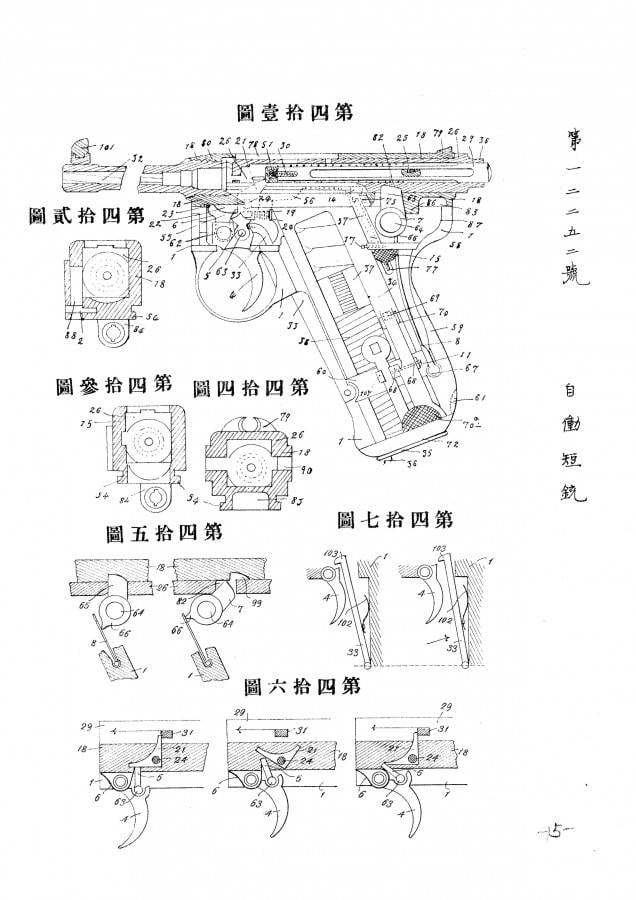
The gun was patented even in China…
That is why in 1912 a model called “Brixia” appeared again: stronger and heavier (950 g), smoother, without a fuse and with a more reliable shutter locking system, but still it was not strong enough for continuous use. 9mm Parabellum cartridge.
The second pistol in a series of Italian losers in 1910 was designed by the Italian officer Giuseppe Vitali, who participated in the creation of the Vetterli-Vitali rifle. He also designed the Vitali M1910 Terni automatic pistol, but almost nothing is known about him. Moreover, it is not known even to such a weapons specialist as Ian McCollom. Again, outwardly, the gun looks like a damaged Mauser K96. The bolt and barrel move together for a short distance before they unlock and the bolt continues to coast back to eject the empty case and load a new cartridge into the chamber. The design uses a large external trigger, which is hidden between the side walls of the U-shaped bolt, probably so that it does not cling to a holster or clothing.
The pistol was loaded from a 6-round clip, which for that time was already becoming an anachronism. The 7,65-mm caliber was also not of particular interest, since at the same time in Switzerland, the Parabellum of the same caliber was in service, much more perfect in every respect.
However, the highlight of the design was not at all the combat characteristics of this pistol, but … operational, as in the case of the Revelli pistol. It was enough to unscrew the L-shaped screw with a pear-shaped head in the back of the frame on the right, as the pistol opened on a hinge tripled in front of the trigger guard, like “clamshell revolvers”.
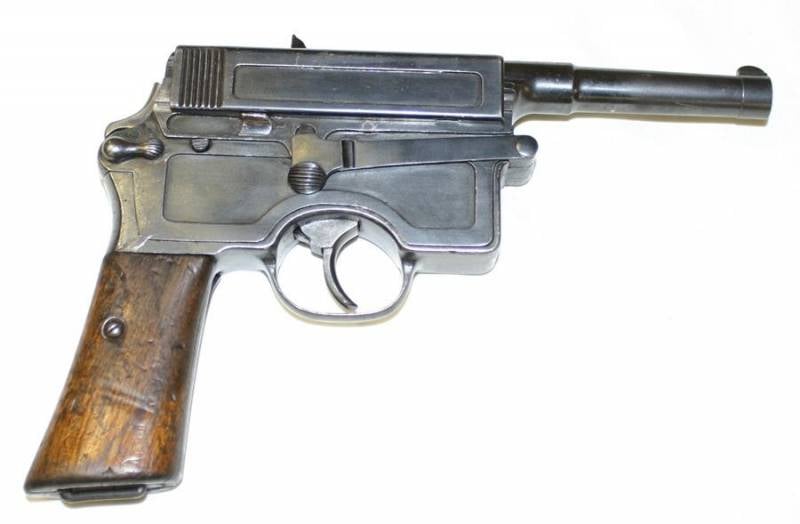
Pistol “Vitali” M1910 Terni. The pear-shaped head of the fixing screw is clearly visible. Photo http://littlegun.be
Why this was done is unclear. This did not add any convenience in using Vitali. Moreover, due to the high-lying line of the barrel, even when firing with weak cartridges, he had to experience a strong overturning moment. Apparently, all these “cumulative characteristics” led to the fact that very few such “Mausers” were made, and no information about them and their creator has reached us.
It is quite obvious that thanks to this design, it was more convenient to lubricate his trigger and take care of the pistol as a whole than for the German Mauser. But despite this, the gun “did not go.” Nobody liked it and nobody used it!
- Author:
- Vyacheslav Shpakovsky
